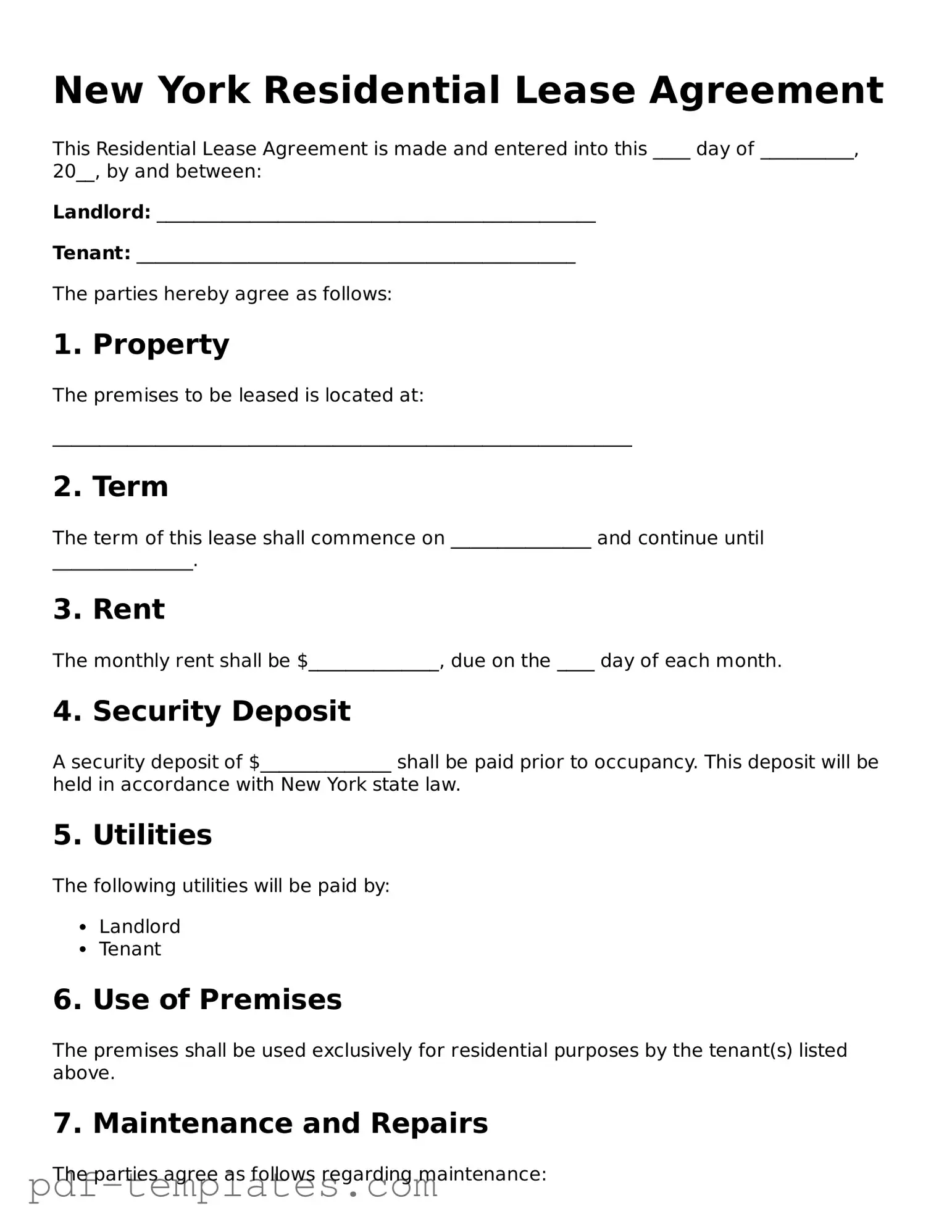The New York Residential Lease Agreement form shares similarities with the Commercial Lease Agreement. Both documents outline the terms and conditions under which a property is rented. However, while the Residential Lease focuses on living spaces, the Commercial Lease pertains to business premises. Each agreement typically includes details about rent, duration, and responsibilities for maintenance, ensuring that both landlords and tenants understand their rights and obligations.
Another document akin to the Residential Lease Agreement is the Roommate Agreement. This document is particularly useful when multiple tenants share a rental space. It details how rent and utilities will be split, outlines house rules, and addresses issues like guest policies. While a Residential Lease may cover the entire property, a Roommate Agreement hones in on the dynamics between individuals sharing that space.
The Lease Option Agreement is also similar, as it provides tenants with the right to purchase the property at a later date. This document combines elements of a lease with a potential sale, allowing tenants to invest in their living situation. Like the Residential Lease, it includes terms regarding rent and property maintenance, but it adds a layer of financial planning for those interested in homeownership.
A Rent-to-Own Agreement bears resemblance to the Residential Lease as well. This document allows tenants to rent a property with the intention of buying it later. It outlines the rental period and purchase terms, similar to a Lease Option Agreement. This type of agreement can be appealing to those who may not currently qualify for a mortgage but wish to work toward homeownership.
The Sublease Agreement is another document that parallels the Residential Lease. This agreement allows a tenant to rent out their leased space to another individual, with the landlord’s permission. Like the Residential Lease, it includes terms regarding rent and responsibilities, ensuring that both the original tenant and the subtenant understand their obligations.
A Tenancy Agreement is similar in that it establishes the terms of renting a property. While it may be used interchangeably with a lease in some contexts, a Tenancy Agreement often has a more informal tone. It covers essential details like rent, duration, and rules, providing a clear understanding of the landlord-tenant relationship, just as the Residential Lease does.
The Rental Application form is another related document. While it serves a different purpose, it is an essential step before entering into a Residential Lease Agreement. This form gathers information about potential tenants, including their rental history and financial background. It helps landlords make informed decisions about who to rent to, ensuring a good fit for both parties.
Lastly, the Lease Termination Agreement is similar because it outlines the process for ending a lease. This document is crucial for both landlords and tenants to understand their rights and responsibilities when concluding a rental arrangement. It includes details about notice periods and any final obligations, ensuring a smooth transition for both parties involved.
